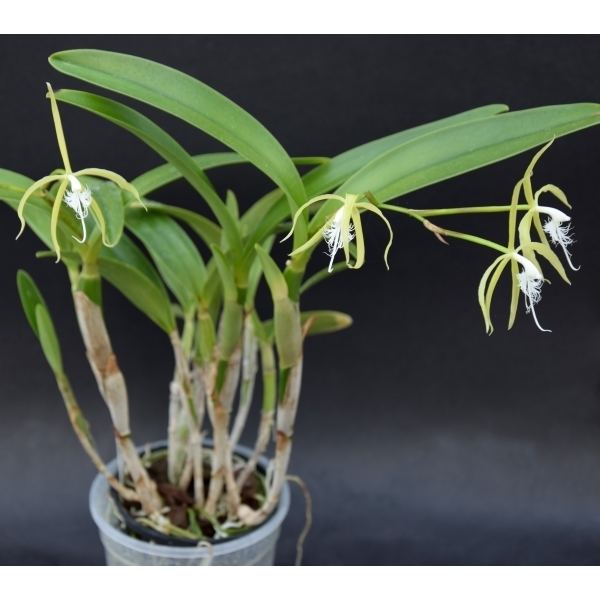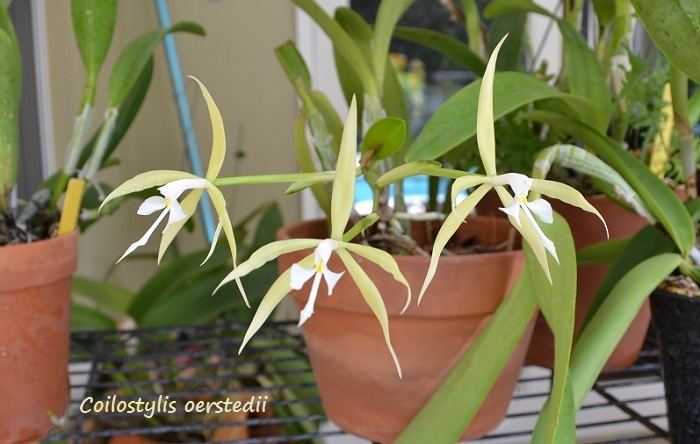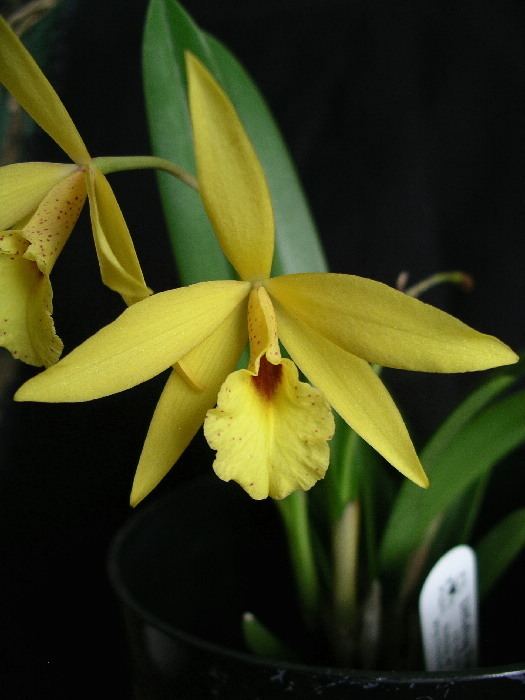Kingdom Plantae Scientific name Coilostylis | Family Orchidaceae Species See text Rank Genus | |
 | ||
Lower classifications Epidendrum ciliare, Coilostylis clavata | ||
Epidendrum ciliares coilostylis ciliaris
Coilostylis is a genus of orchids. It was split off from the "supergenus" Epidendrum in 2004. This genus features pseudobulbs, large bracts around the flowers, and flowers that are typically resupinate, with the trilobate lip adnate to the column and having a long thin midlobe. It is not unusual for this genus to produce keikes.
Contents
- Epidendrum ciliares coilostylis ciliaris
- Epidendrum oerstedii coilostylis oerstedii e cilare var oerstedii
- Species
- Acceptance
- References

Epidendrum oerstedii coilostylis oerstedii e cilare var oerstedii
Species

http://www.abundaflora.com/epi_falcatum.htm

http://www.orchidspecies.com/coiloerstedii.htm


http://www.orchidspecies.com/orphotdir/epipurpurescens.jpg A digitized version of the original publication in Ewdwards's Botanical Register can be found on page 10 (after the plates) of http://www.botanicus.org/item/31753002748405
Acceptance

Althouogh the existence of the taxon Coilostylis is hard to deny, there remains some debate about its rank: is this a genus, subgenus, section, or subsection? A brief summary of recent thought (since the publication of The Debatable Epidendrums) is provided.

In January, 2005, The Royal Botanic Gardens, Kew, published Orchid Research Newsletter Number 45, announcing that Volume 4 of Genera Orchidacearum was being sent to the printers. This Newsletter listed the new assignment of species to Coilostylis. (This reference can be found at http://www.kew.org/herbarium/orchid/orn45.pdf)
As recently as December 2007, The RHS Orchid Hybrid Registration Authority was still calling Coilostylis vivipara by the name "Epidendrum viviparum Lindl." In the same issue of Orchid Review, the RHS announced that the changes in Volume 4 of Genera Orchidacearum were now reflected in new registrations. (This reference can be found at http://www.rhs.org.uk/NR/rdonlyres/EB660871-3BBF-43B1-8DB6-5ECF714E7C7F/0/orrevMar08.pdf)
